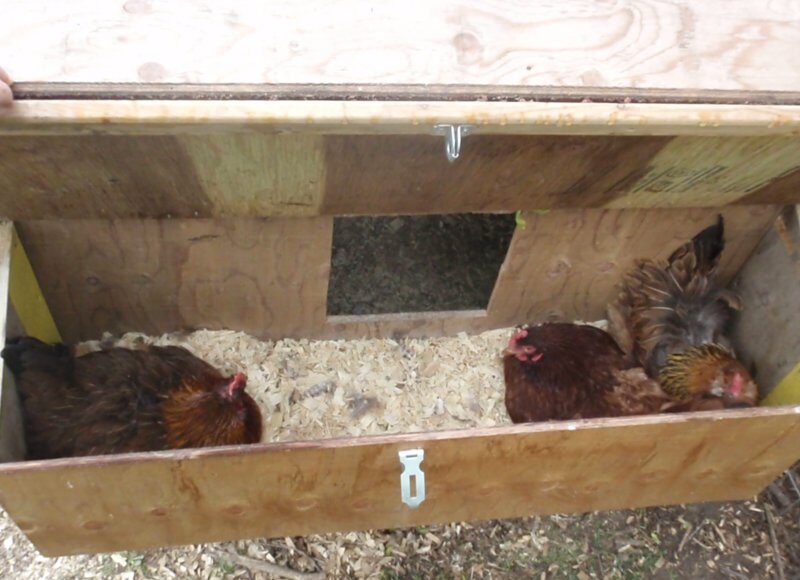Raising chickens can be a delightful endeavor, bringing fresh eggs and a touch of rural charm to your backyard. However, a common frustration among chicken owners is when their feathered friends refuse to use the nesting boxes provided for them. Understanding why chickens don’t use nesting boxes can help you create a more welcoming environment for egg-laying and ensure the happiness and productivity of your flock.

The Importance of Nesting Boxes
Nesting boxes play a crucial role in the life of a laying hen. They provide a safe, comfortable space for hens to lay their eggs and help keep the eggs clean and protected from predators. Properly designed and maintained nesting boxes can significantly improve the overall health and productivity of your flock.
Common Reasons Chickens Avoid Nesting Boxes
There are several reasons why chickens might avoid using the nesting boxes you’ve provided. Understanding these reasons can help you make the necessary changes to encourage your hens to use them.
Location of the Nesting Boxes
The location of your nesting boxes can significantly impact whether or not your chickens will use them. Chickens prefer quiet, secluded areas to lay their eggs. If your nesting boxes are in a busy or noisy area, your hens might choose to lay their eggs elsewhere. Consider relocating the boxes to a quieter part of your coop.
Size and Design of the Nesting Boxes
Chickens need enough space to feel comfortable when laying eggs. If the nesting boxes are too small, hens might find them uncomfortable and choose to lay eggs outside the boxes. Ensure your boxes are appropriately sized for your breed of chicken. A typical box should be about 12 inches wide, 12 inches deep, and 12 inches high.
Unclean Conditions
Hens are more likely to avoid nesting boxes that are dirty or have old bedding. Regularly clean the boxes and replace the bedding to ensure a fresh, inviting space for your hens. Using materials like straw or wood shavings can help keep the boxes clean and comfortable.
Insufficient Number of Nesting Boxes
Having too few nesting boxes can lead to competition and stress among your hens. A good rule of thumb is to have one box for every four to five hens. This ensures that there is enough space for all your hens to lay their eggs without feeling crowded.
Encouraging Chickens to Use Nesting Boxes
Once you’ve addressed the potential issues, you can take additional steps to encourage your hens to use the nesting boxes.
Use Fake Eggs
Placing fake eggs in the nesting boxes can signal to your hens that these are safe places to lay their eggs. This simple trick can encourage them to start using the boxes.
Provide Privacy
Chickens prefer privacy when laying eggs. Adding curtains or partitions to the entrance of the nesting boxes can create a more secluded environment, making the boxes more appealing to your hens.
Maintain a Consistent Routine
Chickens thrive on routine. By maintaining a consistent feeding and care schedule, you create a stable environment in which your hens feel secure and are more likely to use the nesting boxes.

FAQs
How do I know if my chicken is about to lay an egg?
Signs that a hen is about to lay include restlessness, frequent visits to the nest, and a distinctive ‘laying’ posture. For more detailed information, visit Signs a Hen is About to Lay.
What materials should I use for nesting box bedding?
Straw, hay, or wood shavings are excellent choices for nesting box bedding. These materials are soft, absorbent, and provide a comfortable laying surface. For more tips, check out The Best Chicken Nesting Material.
How many eggs does a chicken lay per day?
Most chickens lay one egg per day, although this can vary based on breed, age, and environmental conditions. For more insights into chicken behavior, see Natural Nesting Behavior of Chickens.
In conclusion, understanding why chickens don’t use nesting boxes involves considering factors like location, design, cleanliness, and the number of boxes. By addressing these issues and implementing strategies to make the boxes more appealing, you can encourage your hens to lay their eggs where you want them to. For more guidance on creating the perfect nesting environment, visit How to Build a Chicken Nesting Box.
This article contains affiliate links. We may earn a commission at no extra cost to you.











